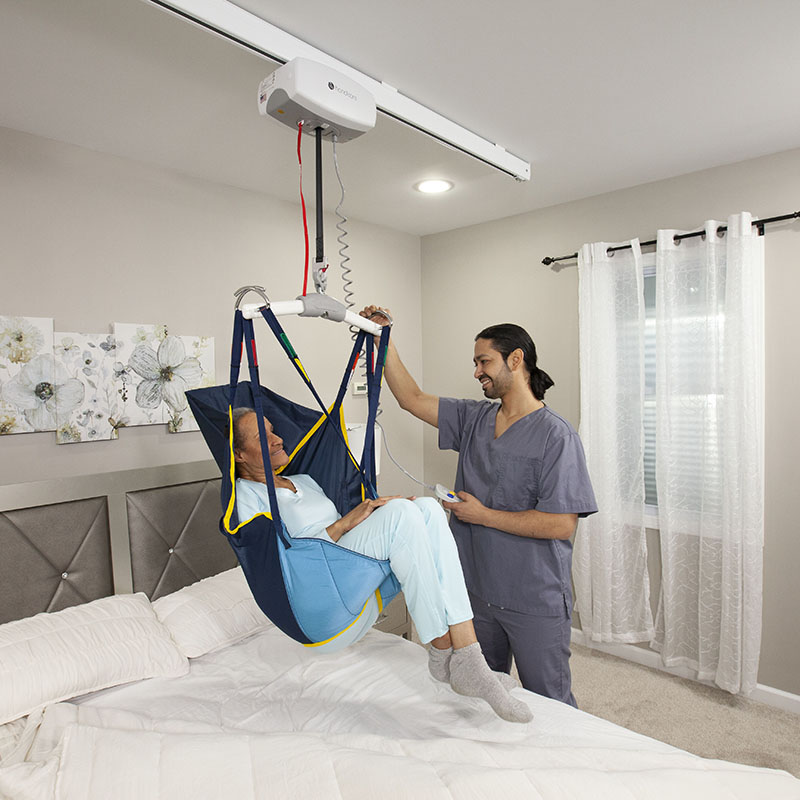Patient lift systems help caregivers, healthcare professionals and patients to safely and comfortably transfer and lift their patients. They are vital for those who have limited mobility including elderly people, disabled persons and those recovering from surgery or injuries.

On the market, there are various types of patient lifts such as overhead Hoyer lifts as well as mechanical lift transfers mobility lifts, and others. This article will highlight the advantages of each of these systems for patient lifts.
Mechanical lift transfer
Mechanical lift transfer is one type of patient lift system which uses a hydraulic or electric mechanism to transfer and lift patients. It is comprised of a lift unit, a sling, and a base that has wheels. The lift unit is linked to a sling wrapped around the patient and it lifts them up from a lying or sitting position.
Mechanical lift transfer is an efficient solution to ensure safe patient transfers in that it decreases the chance of injury to both the patient as well as the caregiver. It also eases the physical stress on the body of the caregiver as the lift machine handles the majority of the lifting. The mechanical lift transfer system is ideal for care homes because it allows easy maneuverability even in tight spaces.
Overhead hoyer lift
The overhead Hoyer lift is a kind of lift transfer machine which makes use of an overhead track system for transfer of patients. It is comprised of an overhead track that is mounted on the ceiling, a lift device that is connected to the track and a sling which is wrapped around the patient.
The overhead Hoyer lift provides an efficient and secure method of moving patients from one area to another. It also allows for easy transfer from bed to a wheelchair, or a commode, reducing the risk of injuries and falls.
As the lift is suspended from the ceiling, it creates more space on the floor. This is beneficial for small spaces or areas which have limited floor space. Additionally, the overhead Hoyer lift has higher weight capacities than other patient lift systems, which makes it suitable for bariatric patients.
Mobility lift systems
Mobility lifts are made to help people with impaired mobility in moving within their homes or other locations. They are comprised of a base unit with wheels as well as a lift arm, which has a an sling that is attached to it. The patient sits in the sling and is carried by the arm.
Patients who are in need of aid with mobility and are unable to stand or walk with assistance are able to benefit from a mobility lift system. These lifts are a secure and safe way to transport patients, while protecting their autonomy and allowing them lead a fulfilling and enjoyable life.
The portability of mobility lift systems offers a variety of advantages. They can easily be moved from one place to another and are a good option for different locations. In addition, these systems are simple to operate, requiring only minimal effort from the caregiver.
Choosing the appropriate patient lift system
The consideration should be given to the flexibility of the patient the patient, their weight and size as well as any possible environmental conditions that they may be used. It is also crucial to consider the caregiver’s physical abilities and limitations, along with the cost.
The overhead Hoyer lift can be an ideal option for those who have limited mobility or who require frequent transfers. It’s easy to use, provides a safe and efficient method of patient transfers, and also frees more floor space. It can be costly and requires installation, making it is best suited for long-term nursing homes.
In the end, mechanical lift transfer is a great asset for any home care environment due to its convenience as well as its minimal physical burden on caregivers and the cost. It is essential to take the time necessary to evaluate your situation before purchasing the equipment. You can ensure that you’re making the right decision by conducting research and consulting industry experts. Once you’ve established the facts, you can make an informed decision.
For more information, click mechanical lift transfer